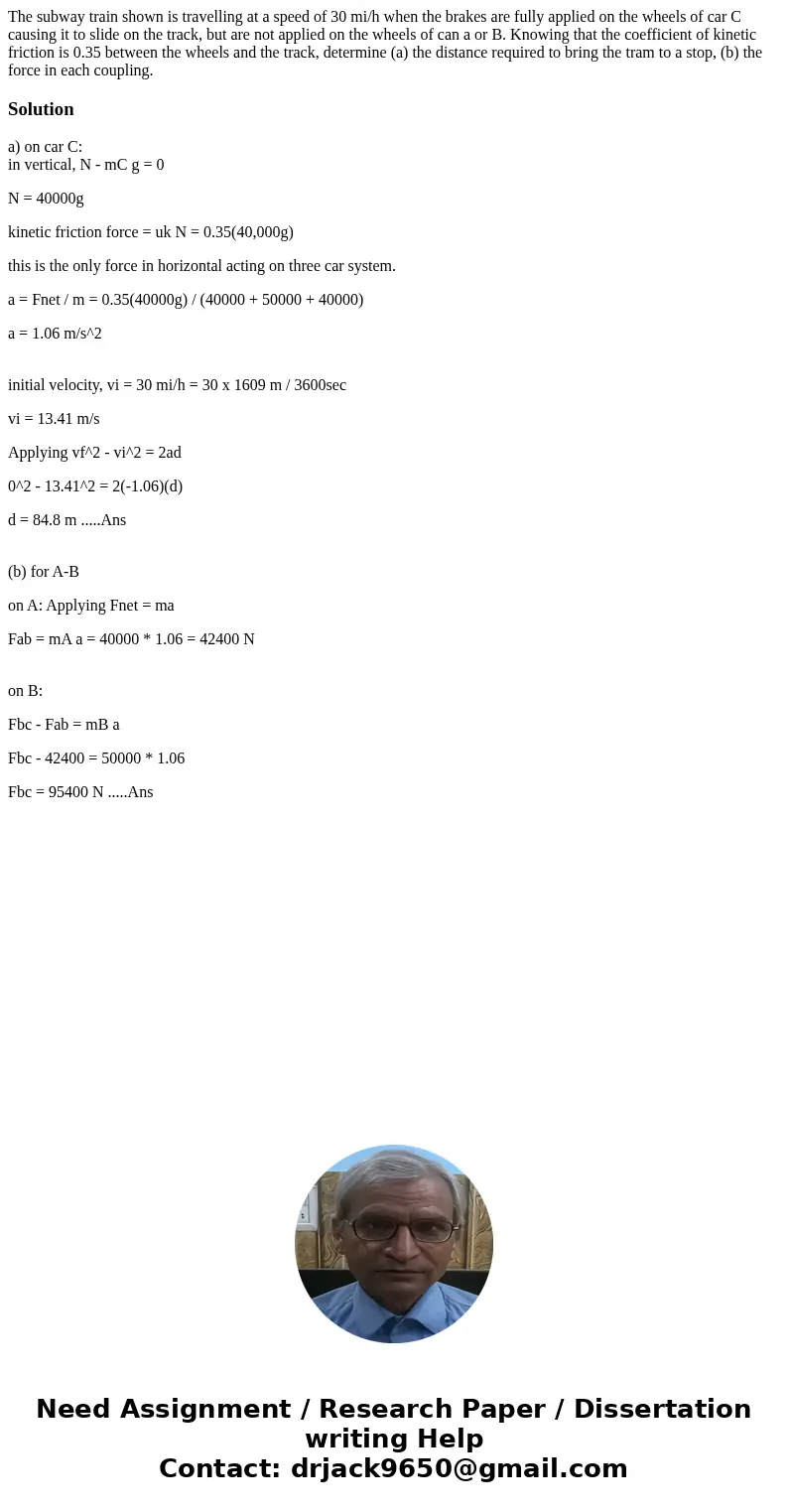The subway train shown is travelling at a speed of 30 mih wh
The subway train shown is travelling at a speed of 30 mi/h when the brakes are fully applied on the wheels of car C causing it to slide on the track, but are not applied on the wheels of can a or B. Knowing that the coefficient of kinetic friction is 0.35 between the wheels and the track, determine (a) the distance required to bring the tram to a stop, (b) the force in each coupling.
Solution
a) on car C:
in vertical, N - mC g = 0
N = 40000g
kinetic friction force = uk N = 0.35(40,000g)
this is the only force in horizontal acting on three car system.
a = Fnet / m = 0.35(40000g) / (40000 + 50000 + 40000)
a = 1.06 m/s^2
initial velocity, vi = 30 mi/h = 30 x 1609 m / 3600sec
vi = 13.41 m/s
Applying vf^2 - vi^2 = 2ad
0^2 - 13.41^2 = 2(-1.06)(d)
d = 84.8 m .....Ans
(b) for A-B
on A: Applying Fnet = ma
Fab = mA a = 40000 * 1.06 = 42400 N
on B:
Fbc - Fab = mB a
Fbc - 42400 = 50000 * 1.06
Fbc = 95400 N .....Ans

 Homework Sourse
Homework Sourse